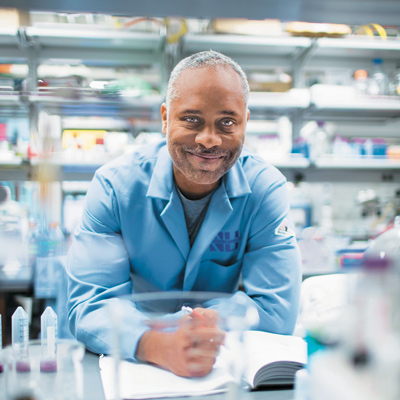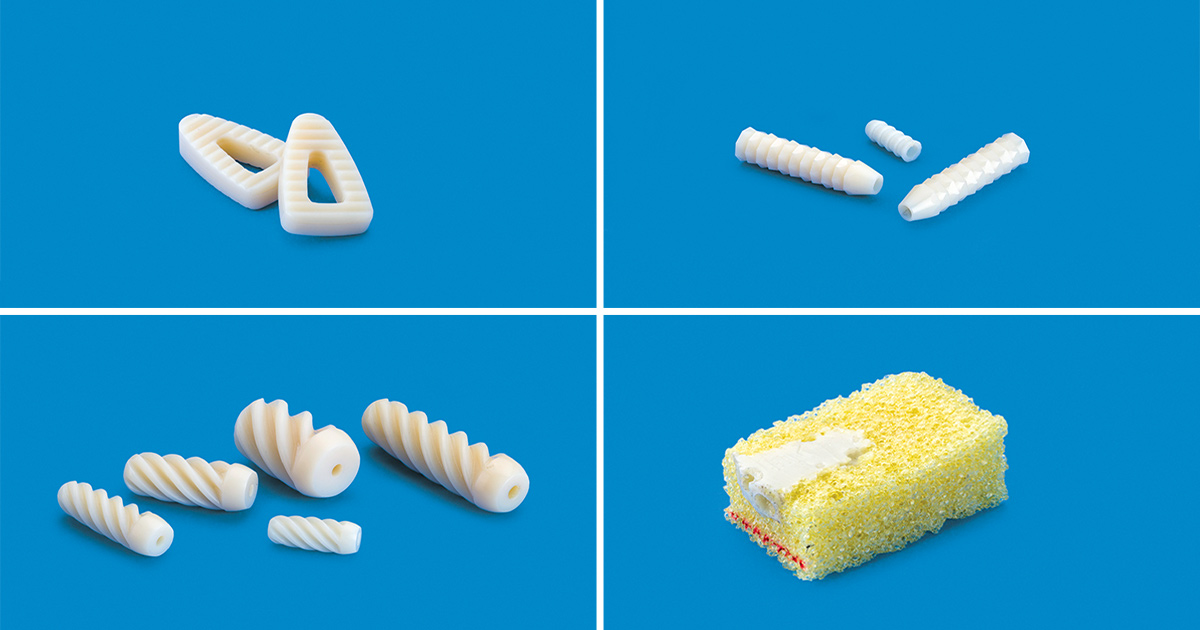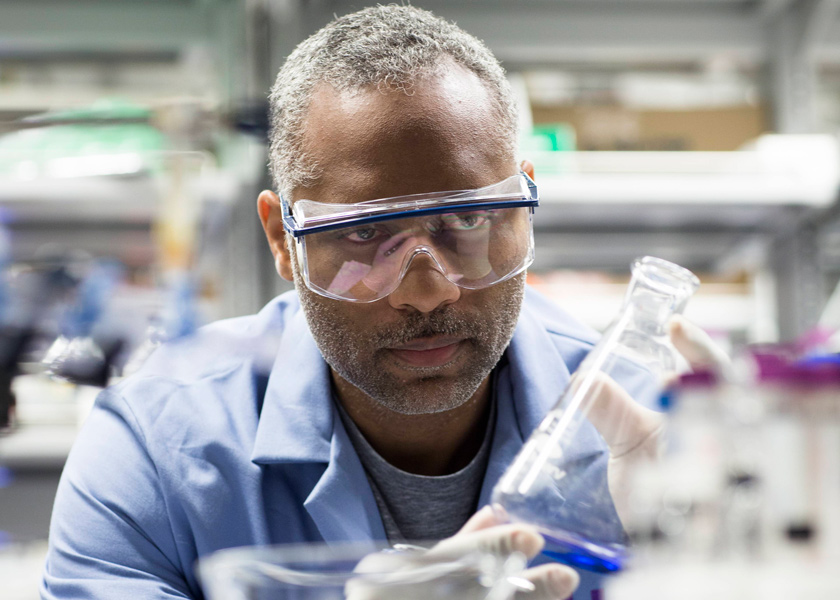Biomaterial Technology Moves from Lab Bench to the Orthopedic Market
Resorbable anti-inflammatory tendon fixation technology used in patients for the first time.
Northwestern biomedical engineer Guillermo A. Ameer has achieved a rare, major accomplishment: A medical product based on novel biomaterials pioneered in his laboratory will be widely available for use in musculoskeletal surgeries to directly benefit patients.

CITREGEN has unique chemical and mechanical properties for orthopedic surgical applications that help grafted tissue heal. It contains organic molecules and includes citrate, phosphate, and calcium, components that are essential to healthy bone growth. CITREGEN is the first thermoset biodegradable synthetic polymer ever used in implantable medical devices.
CITRELOCK, which received clearance from the US Food and Drug Administration last year, has a compressive strength comparable to cortical bone and maintains structural integrity during the healing phase, while allowing the implant to be remodeled by host tissue over time.

Two Decades of Technology Development
Ameer, Daniel Hale Williams Professor of Biomedical Engineering and professor of surgery in the Feinberg School of Medicine, who is also founding director of the Center for Advanced Regenerative Engineering (CARE), is on a mission to use engineering and workforce training to enable the practice of regenerative medicine to improve the outcome of surgeries and benefit patients.
“When I first started my lab years ago here at Northwestern, one of my major goals was to use engineering to have a positive impact on patient care. That goal has been a guiding principle for my research. I sought to work with surgeons to fully understand medical problems, patient needs, and constraints, and come up with solutions,” says Ameer, who was recently elected to the National Academy of Medicine, one of the highest honors in the field.
“We first developed our citrate-based polymers 18 or so years ago and initially researched applications in vascular and orthopedic tissue engineering. For the latter, we created composites that are a mixture of the polymer and a ceramic, the foundation for CITREGEN. The first publication of those composites for bone regeneration, in collaboration with orthopedic surgeon Jason Koh, was in the journal Biomaterials in 2006. Our work has been expanded upon by other researchers around the world, perhaps most notably by my former postdoctoral trainee Jian Yang, now Dorothy Foehr Huck and J. Lloyd Huck Chair in Regenerative Engineering at Pennsylvania State University.

“A decade later, through collaborations with industry, we were able to jump-start the translation process to use our polymer technology in innovative bioresorbable orthopedic devices. Even though 20 years seems like a long time to see our technology get to market, we are fortunate to achieve this milestone in my academic career.”
On searching for new materials: “What drove the development of citrate-based polymers and composites was the need to work with materials that were elastic like rubber, easy to tailor, and could support cell functions, but also would safely dissolve away in the body while being replaced with normal tissue—as no such material existed at the time. Working with an excellent team of students and postdocs, we invented a material by taking into account a variety of requirements from the start. These included the body’s mechanism for degradation, ability to synthesize easily and with safe components, and modularity to control material properties for a variety of potential applications. Throughout the years, we and others have demonstrated that citrate-based polymer can be engineered into devices that help regenerate blood vessels, skin, heart, cartilage, bone, bladder, and muscle tissues.”
On demand for better devices: “There is a demand from surgeons and patients for better bioresorbable devices, ones that promote tissue regeneration or at least would not interfere with it. It is not easy to introduce new devices built with new bioresorbable polymers in the market due to problems with implants made from traditional biodegradable polymers and the scrutiny from regulatory agencies when reviewing new bioresorbable devices. It was a long process but well worth it to bring new solutions to the market through established medical device companies.”
On taking risks: “Although we pioneered and have been working on this biomaterial technology for almost 20 years, significant credit goes to visionary individuals from industry, specifically from Acuitive Technologies and Stryker, for recognizing the potential of our technology and investing resources for its development and validation. It took Acuitive six years to develop CITREGEN into useful products. The collaborations and partnerships that CARE has formed are important to replicating CITREGEN’s success in other health applications and translating into clinical practice other types of regenerative engineering technologies in the future.”
